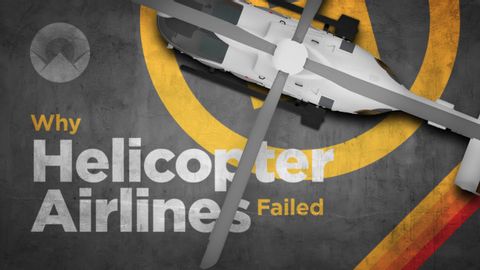为什么直升机航空公司失败(Why Helicopter Airlines Failed)
joey joey 發佈於 2021 年 06 月 09 日  沒有此條件下的單字
沒有此條件下的單字- n. (c./u.)條件;條款;期間;期限;學期;術語;關係;項;妊娠期;任期
- v.t.命名
US /ˈkɑnˌsɛpt/
・
UK /'kɒnsept/
US /ˈɪnfrəˌstrʌktʃɚ/
・
UK /'ɪnfrəstrʌktʃə(r)/
- n. (u.)基礎設施 ; 基礎結構;組織架構;電腦基礎設施
US /ˈɪmˌpækt/
・
UK /'ɪmpækt/
- n.衝擊;碰撞
- v.t./i.撞擊(某人或物);影響;阻生

